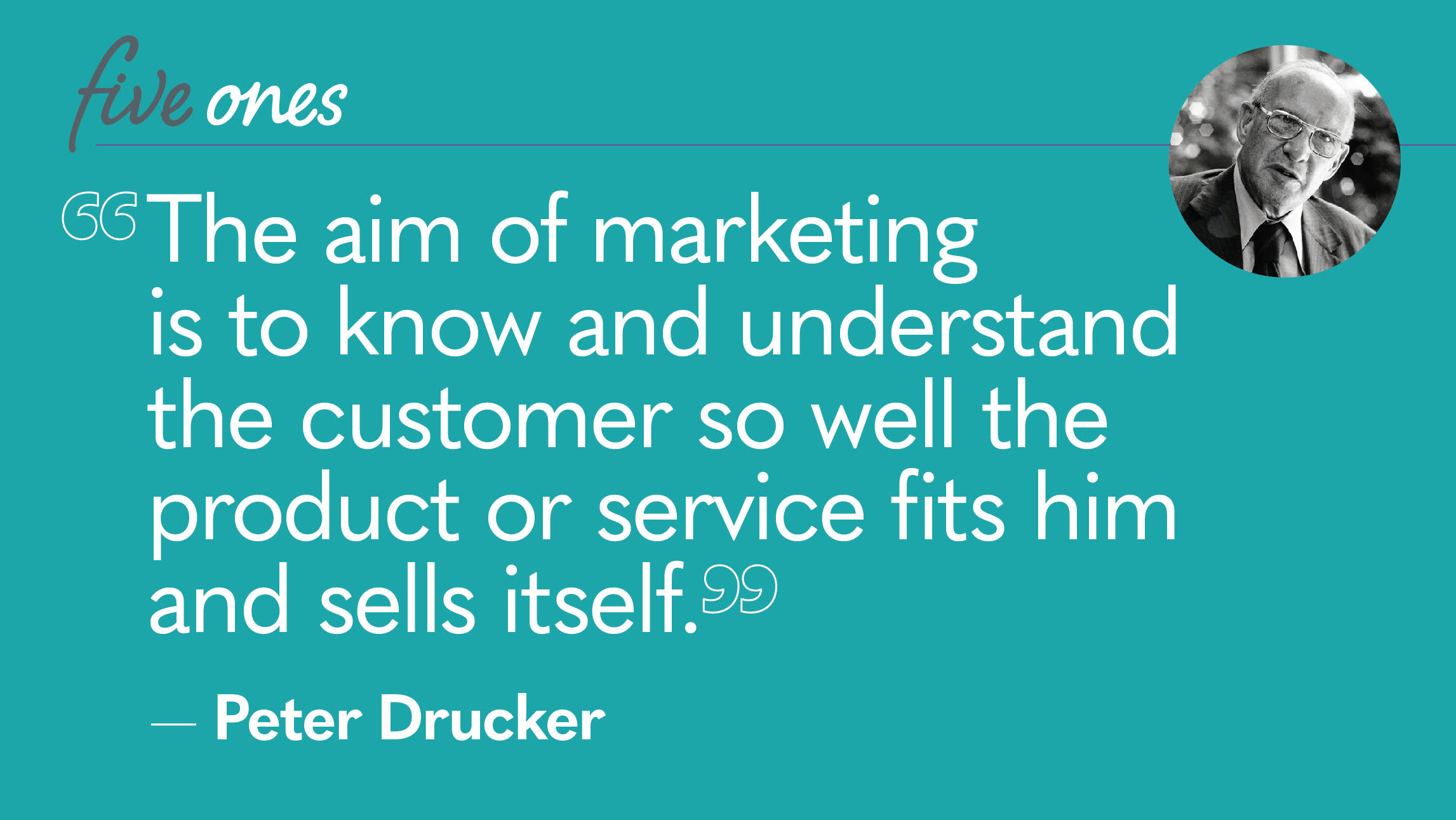
Breaking the Clichés of Generational Marketing
If you’re a marketer, not a day goes by when you aren’t thinking about marketing to millennials or baby boomers, or (gasp!) Generation Z! It’s part of your DNA – the first question of a new project is “who is your target audience?” And within that target audience, you’re likely to select an age group. Why? Because someone’s age is a predictor of their preferences and behavior. Generational marketing is vital for success, and you should know exactly how best to market to each generation in order to ensure you reach your target audience.
Most likely, when listening to podcasts, reading an issue of AdWeek, or perusing LinkedIn you see a ton of content about “the quirks of reaching the millennial generation.” But, the truth is, every generation has distinct experiences that shape how they want to be talked to. So, for effective marketing, you should become well acquainted with a generational marketing strategy and how to utilize it fully.
Baby Boomers
One of the most common misconceptions when it comes to baby boomers is that they hate the internet. But that’s not true. Most of them have adequate experience using various forms of technology, and they’re no stranger to the internet. (Not so long ago, people would say that the only way to get Baby Boomers to donate was through the mail!) After all, both Steve Jobs and Bill Gates are members of the Baby Boomer generation. They’re comfortable texting and using apps and smartphones, so don’t count them out from those forms of communication. However, this generation does appreciate small touches from ‘the good ol days.’ It’s important to know that, while you can utilize technology when marketing to this generation, you want to add some personal touches as well.
- Communication is key – Not just effective communication, but personable conversations. Baby Boomers like to know that their time is valued and that their involvement will make a difference for your nonprofit.
- Well-Written Content – When Baby Boomers browse your website or your social media, they will catch grammar and spelling mistakes, so proofing and accuracy is key. And they’re not the biggest fan of slang. So, don’t use words like ‘yeet’ to appeal to them. It won’t work. Chances are they’ll have no idea what it means anyways.
- Nostalgia – When marketing to baby boomers, it’s important to invoke nostalgia. Remind them, even if it’s in the simplest of ways, of a time from their past. It will form an emotional bond and broker a certain amount of trust between your mission, your programs, your staff and their hearts.
- Keep it Simple – Utilize technology, but keep it simple. Don’t get too flashy or complicated. They will probably be least likely to try your new VR program. So, if this is your main audience you are probably better off investing somewhere else.
- Be Available – Baby Boomers like to talk to actual people. So make sure you’re interacting through live video, chats or available by phone to have a real conversation.
Generation X
Generation Xers love the old way of doing things, but not like Baby Boomers. They like to see ads on TV and in newspapers. But, when it comes to researching your mission and impact, they hit the internet. In fact, 72% of Generation X uses the internet to do research. They understand that you can get more information about an organization that way. So, you might draw them in the old-fashioned way, but you’ll win them over online.
- Get to the Point – Gen Xers don’t like reading multiple pages of information. So, be upfront and transparent so they don’t have to dig. This will build trust. Then, digitally lead them to where you want them to go, like to a donation page or your social media platforms.
- They Love Email – Communicating and advertising through email is a great strategy when it comes to Generation X.
- They Like Facebook and YouTube – Gen Xers aren’t often on Twitter or Instagram, but they are frequent visitors of Facebook and YouTube, making videos an effective marketing tool for this generation.
Millennials
Millennials now make up the majority of the U.S. workforce. In fact, more than one-in-three American labor force participants (35%) are Millennials. There’s a misconception that Millennials are complicated to market to, but that’s not true. You just need to get creative and remember to engage. It’s no secret that Millennials are the internet generation. They have been immersed in the age of technology for most, if not all, of their lives. And, as adults, they now live a good portion of those lives online from social media to their very jobs. So, utilizing social media is a must if you want to target them.
- Use Videos and Images Often – Millennials are used to scrolling through pages and pages of notifications and articles. You need to stand out visually among all the other ads, and the best way to do that is with visualization. A fun video, gif, or meme will get their attention.
- Be Active – It’s important that you have a strong online presence. You should update your content and keep it fresh. Engaging with those who like your page on Facebook or follow you on Instagram is vital.
- Make Your Content Shareable – Millennials love to share. They crowdsource, they ask for referrals and opinions from their inner circles. And that’s great news for you. Because, in the age of social media when one person likes a page, comments on a photo, or shares a story many others will see it. That’s worth its weight in gold for a nonprofit; it’s instant promotion for your cause. So, make sure your content is easily shareable so you reach the largest audience.
- Use Hashtags – It’s time to get creative. Coming up with fun hashtags that are catchy and make people want to join in on the movement is the best way to get attention on Instagram and Twitter. Your ultimate goal is to be trending.
Ok, I couldn’t continue without a little humor (and one of my favorite videos), I mean, I am technically a Millennial myself. It’s full of cliches, but if any of these things are true, you now know how to appeal to them.
Generation Z
This is a generation that is growing up using smartphones more than laptops and computers. They’re a generation that doesn’t know a world without technology. (My son was using an iPad when he was just a year old!) They’re fast movers, and they’re just starting to really explore the world. They’re currently defining themselves and learning more about what’s really important. Marketing to them as a nonprofit will be very easy if you take the right steps because Generation Z is a socially conscious generation. They care about the planet, and they care about human rights. They don’t want to stand by and be silent. So, bringing them to your cause won’t take a lot of effort, so long as you capture their attention. Donations may be a different story, as most are still too young to make a financial impact.
- Utilize Smartphones – This generation won’t be looking at your website or Facebook on a laptop. They’ll be doing it on their smartphone. So, make sure your website looks good in mobile format. If you have an app, even better.
- Use YouTube – This is a generation that idolizes YouTubers. They think of them as celebrities. They listen to them and take their advice often. So, a presence on YouTube and frequently posted videos is the perfect marketing strategy for Generation Z, since they spend so much time using the app.
- Have an Instagram Presence –This is also a generation of Instagram Influencers. They decide what to wear, where to shop, and where to travel based on Instagram accounts. So, it’s important that you have an Instagram presence, and it’s even better if you have merch that you can give to Instagrammers in exchange for pictures posted on their account.
The world would be a boring place if everyone was the same. It’s important to recognize everyone’s differences and celebrate them. The same is true in marketing. It’s important to recognize the differences in generations and market to each one in a way that will resonate with them.
In Conclusion
This is why you should consider integrating generational marketing into your marketing plan. You’ll reach your desired audiences in personal ways that create a true connection and form lasting bonds. This will breathe life into your nonprofit now and for the future.



